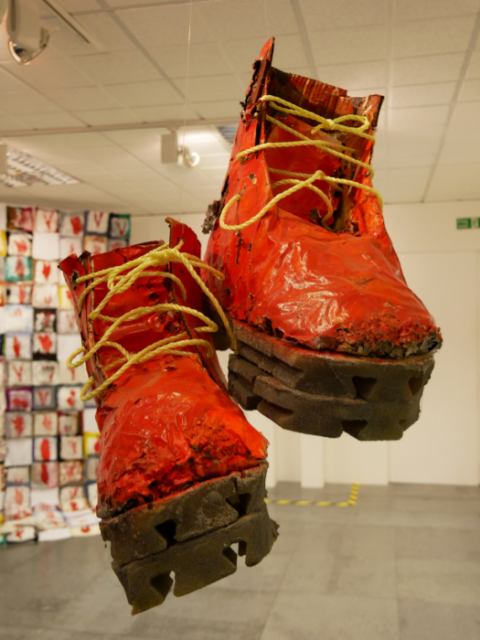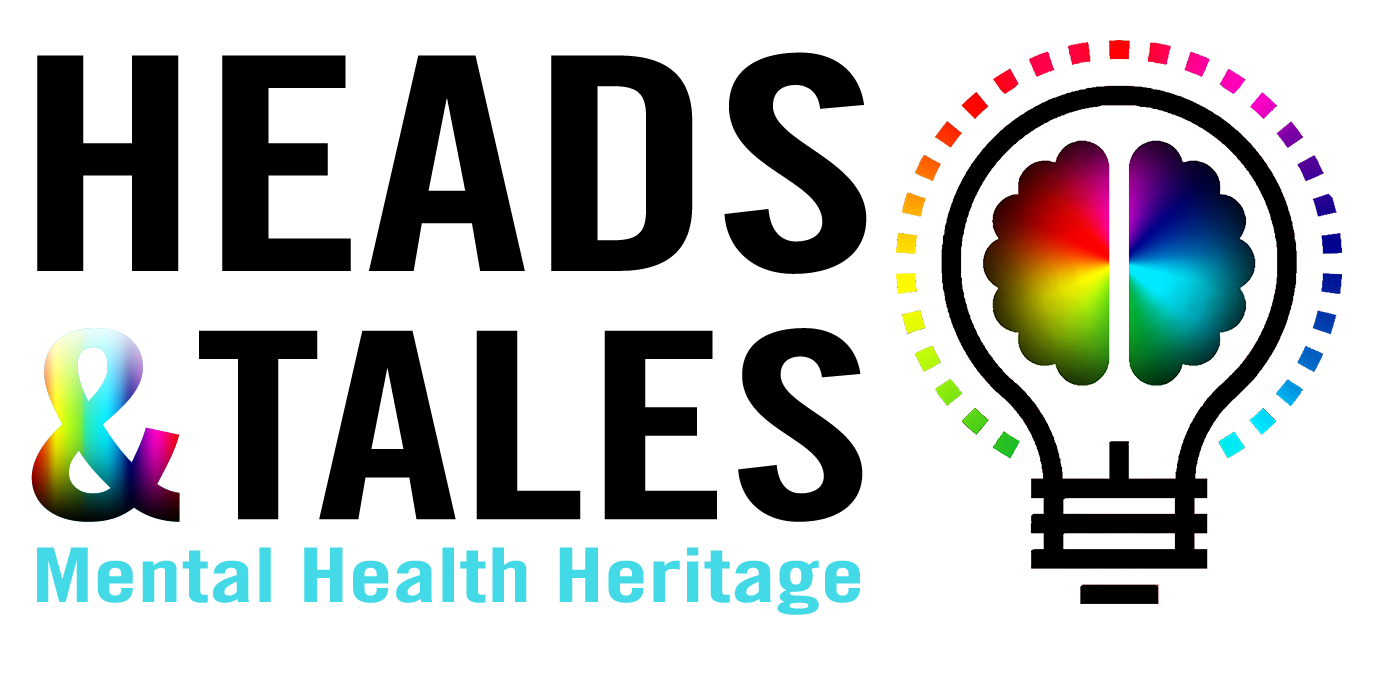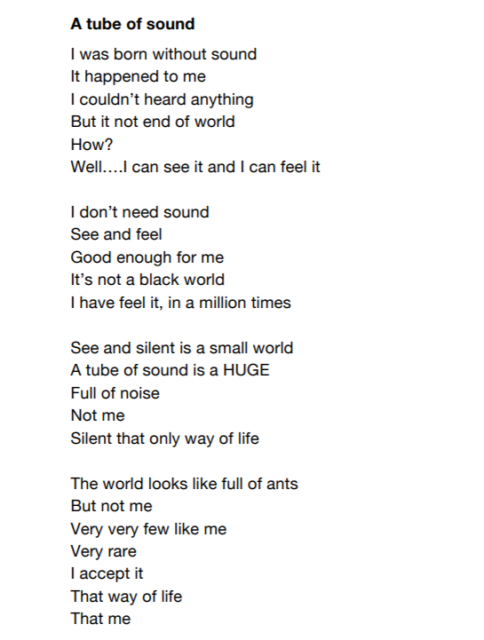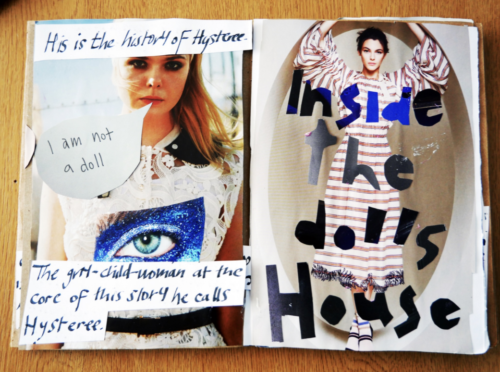Archive Highlights: Deborah Shares Her 3 Favourite Items
Here Deborah, a member of the Heads & Tales steering group, reflects on the project, talks about the importance of the mental health heritage archive, and shares her top three standout items from our mental health heritage archive.
The Heads & Tales Archive Represents a Unique Expression of Mental Health
People sometimes talk about generating mental health narratives ‘from the ground up’ but that’s not easy to bring about when the community has been shut down and silenced, scattered, ignored, stigmatized and impoverished for years.
Looking at the material online in the archive helps me see more clearly the incredible amount of sheer hard work and creativity that has been achieved here – both in the making as well as the stewarding of the archive and its contents.
It’s very powerful to see it all brought together online. So many different individual viewpoints, words, images and voices gathered here to share a unique expression of mental health as a lived, personal and collective experience.
An Archive that is Challenging, Expressive and Alive
Through the Heads & Tales archive initiative, creative practice is shown to be both freeing and empowering, as well as life-affirming, moving and creatively disquieting, despite the complexity and challenge of people’s individual circumstances and conditions.
The archive material testifies to this aliveness with so many diverse and exciting images, objects, poems, songs and observations, all brought together to create a new and bold mental health narrative, one which never ceases to be challenging, expressive, informative, dynamic and alive.
Deborah Shares 3 of her Favourite Archive Items
1. “Too big for One’s Boots”, sculpture
Search “Boots” in the archive to see more images of the sculpture and to read notes from the artist.

Danny Crossley’s ‘Too Big For One’s Boots’ sculpture is a signature piece in the Heads & Tales archive in the sense that they are a complete creative and political gesture, referencing one dark point of practice in (past) time from the deeply felt, compassionately held viewpoint of the present.
Danny learns from the Victorian archive about a pair of lead-weighted and locked boots made for the purpose of ‘constraining runaway patients who might wander in the gardens’ and he then reproduces the boots as art object in present time, gigantic in size and bright scarlet in colour, ’10 times bigger than normal boots and …spiked inside’.
I remember the first time I saw the boots in the studio and then again when they were hung for the exhibition at the Vane Gallery. Properly signposted, they were displayed in front of another very strong piece of work, which also had references to wounding and pain. The sculpted boots are huge, comic, painful to consider and shocking to look at.
At the same time, they are modern, vibrant and alive, reproduced as ‘Pop Art’ which has a way of grabbing your attention the moment you come into the gallery space – it says very boldly, ‘look at me, I am here, this happened’.
For myself as a viewer, the way the boots are recreated help us now in the 21st century to understand something about coercion and control in Victorian medical settings and to feel both anger and surprise in looking back, and the piece prompts us to reflect on the present – raising the question, ‘so where is the control now?’. A great piece of artwork, empathic, comic, unapologetic, political, vibrant and alive.
2. ‘A Tube of Sound’ poem from item “Chilli Creative Writing Group 2015”, page 5
Search “Writing group” in the archive to read more poems from this creative writing group.
There were so many great poems here, it’s been difficult to select just one but I chose this one because it does what some of the other poems also do: breaking the boundaries of what a ‘normal poem’ should look like or how it should be written, bringing new insights to the human condition, freshly and uniquely stated in relation to an area of experience we don’t always know so much about.
Layer on layer, the poem brings us into Graham’s personal understanding of being born into a different sensory experience than the (hearing) one most of us take for granted. At the same time, he manages to convey, not the lack embedded in stewarding his difference, or any assumed limitation by others in terms of what it is to be born deaf – instead, he brings to us the diversity, completeness and uniqueness of his personal experience.
The words he chooses, how they are communicated, the images he creates and the significance he draws out, all combine to bring us closer to something beautiful, powerful, rare, and deeply reflective. For me, this is poetry gold, but I question how many people would have had the privilege of reading it, if it weren’t for the archive project.
3. ReBelle Yell by Zoe C. Pg 4 Handmade Sketchbook 2016
Search “ReBelle Yell” in the archive to explore this handmade sketchbook for yourself.
This is just is just one page of the sketchbook material Zoe C. has created – I’ve chosen a single image and script, page 4, the eye and the female figure and the words scribbled across it, ‘I am not a doll’, as a single example of the sure-footed and effective way she works.
I found this series of images completely fresh and exciting, and enviable for its artistic approach. I loved the torn and drawn-on paper and the scribbled handwritten words. Zoe C. tells us she works quickly and playfully, and this brings a freshness and spontaneity to what she achieves.
At the same time, I feel the selected images she presents and the words she writes are sharp in their observations and bold in their presentation, confident in what they have to say. Her work cuts through the academic commentary about the male and female gaze with a direct challenge: ‘You think you are looking at me, but I am looking at, and right through, you’.
Zoe makes her work look easy, but if you have ever spent an afternoon trying to make paper, scissors, cut-out and script say something in a memorable, significant and arresting way, this is the kind of outcome you can only dream about.
The key word she uses in describing her own approach is ‘playful’, and I think this is a crucial part of making and creating work that goes beyond the boundaries of how art ‘should’ look’.
Thanks to Deborah for sharing her thoughts on the Heads & Tales project and some of her personal highlights from the archive. Explore these items and hundreds more in our mental health heritage archive.




